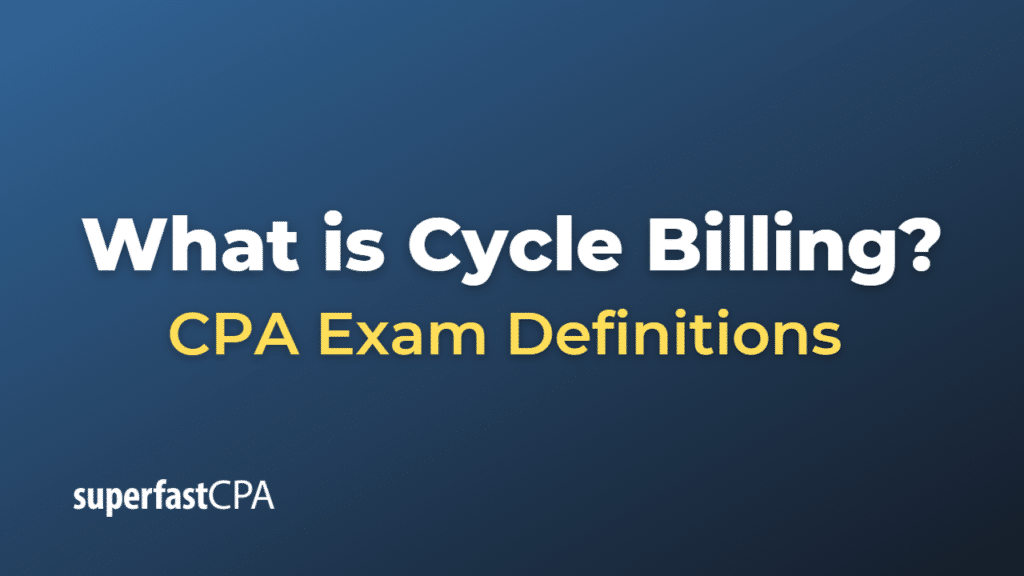Cycle Billing
Cycle billing is a practice used by companies, often in the financial sector like credit card companies, where different customers are billed on different days throughout the month. This process helps to distribute the workload for the billing department or system more evenly, rather than having all invoices due on the same day.
For example, a company may split its customer base into four groups and assign each group a different billing cycle: the 1st, 8th, 15th, and 22nd of the month. This means that one quarter of the company’s customers receive their bills on each of these dates.
The benefits of cycle billing include:
- It can improve cash flow by receiving payments throughout the month rather than all at once.
- It can reduce the peak workload for the billing department and the payment processing system.
- It can be more convenient for customers, as they can potentially choose a billing cycle that aligns best with their personal cash flow.
The exact billing cycle could be determined by various factors such as the date the account was opened, the customer’s request, or other company-specific factors.
Example of Cycle Billing
Let’s take the example of a credit card company.
Credit card companies have millions of customers, and it would be an enormous task to send out all bills on the same day, and then process all the payments coming back on the same day. So instead, they use cycle billing.
Let’s say the company splits its customers into four groups, based on when they opened their accounts:
- Group A: Customers who opened their accounts between the 1st and 7th of the month.
- Group B: Customers who opened their accounts between the 8th and 14th of the month.
- Group C: Customers who opened their accounts between the 15th and 21st of the month.
- Group D: Customers who opened their accounts between the 22nd and the end of the month.
So, customers in Group A receive their credit card bills on the 1st of each month, and the payment is due by the 30th of the month.
Similarly, Group B gets their bills on the 8th of the month with the payment due by the 7th of the next month, Group C gets their bills on the 15th with due date by the 14th of the next month, and Group D gets their bills on the 22nd with due date by the 21st of the next month.
This way, the company’s billing department has a steadier, more evenly-distributed workload throughout the month, and payments are coming in on a rolling basis, which helps with the company’s cash flow.













